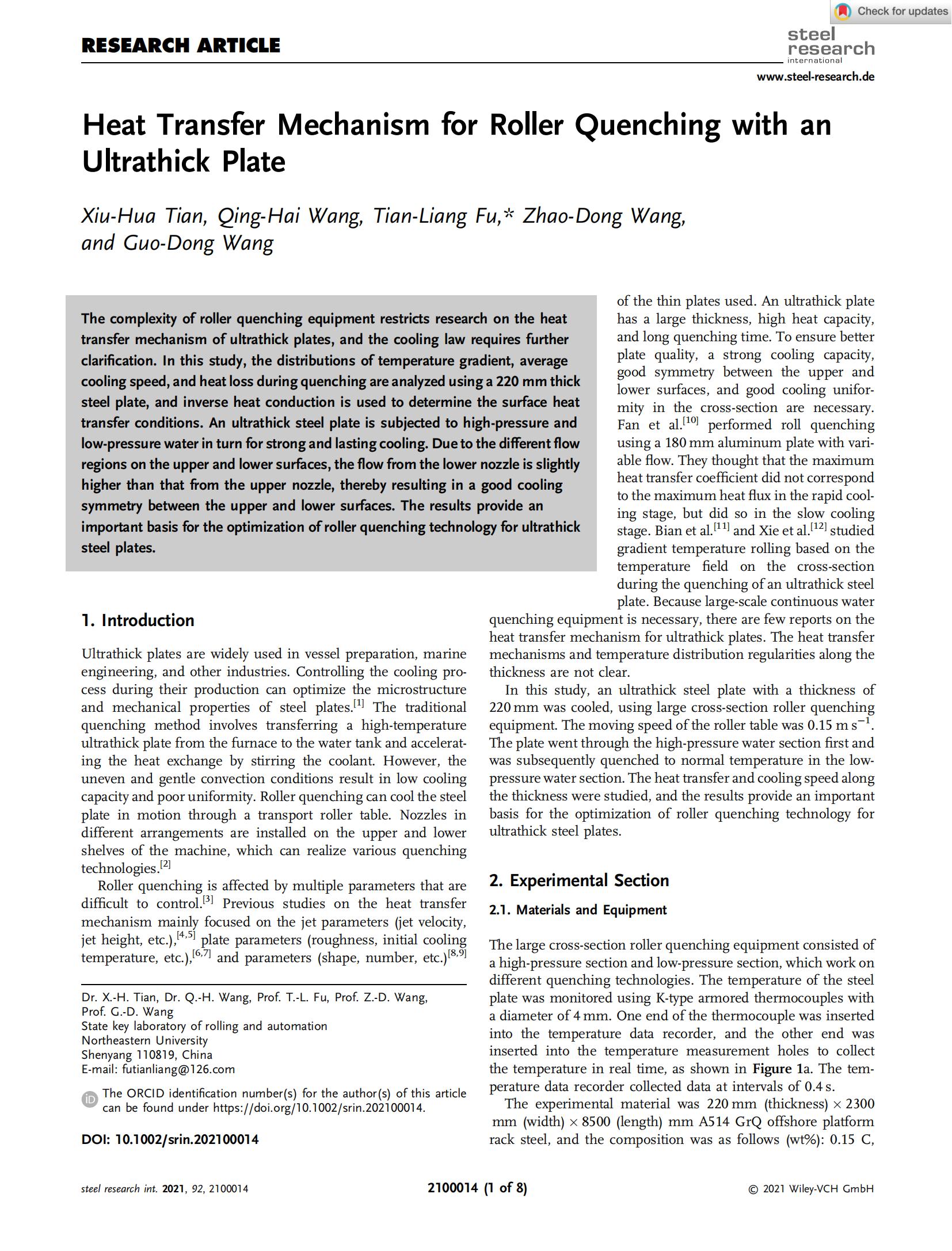The complexity of roller quenching equipment restricts research on the heat transfer mechanism of ultrathick plates, and the cooling law requires further clarification. In this study, the distributions of temperature gradient, average cooling speed, and heat loss during quenching are analyzed using a 220 mm thick steel plate, and inverse heat conduction is used to determine the surface heat transfer conditions. An ultrathick steel plate is subjected to high-pressure and low-pressure water in turn for strong and lasting cooling. Due to the different flow regions on the upper and lower surfaces, the flow from the lower nozzle is slightly higher than that from the upper nozzle, thereby resulting in a good cooling symmetry between the upper and lower surfaces. The results provide an important basis for the optimization of roller quenching technology for ultrathick steel plates.
